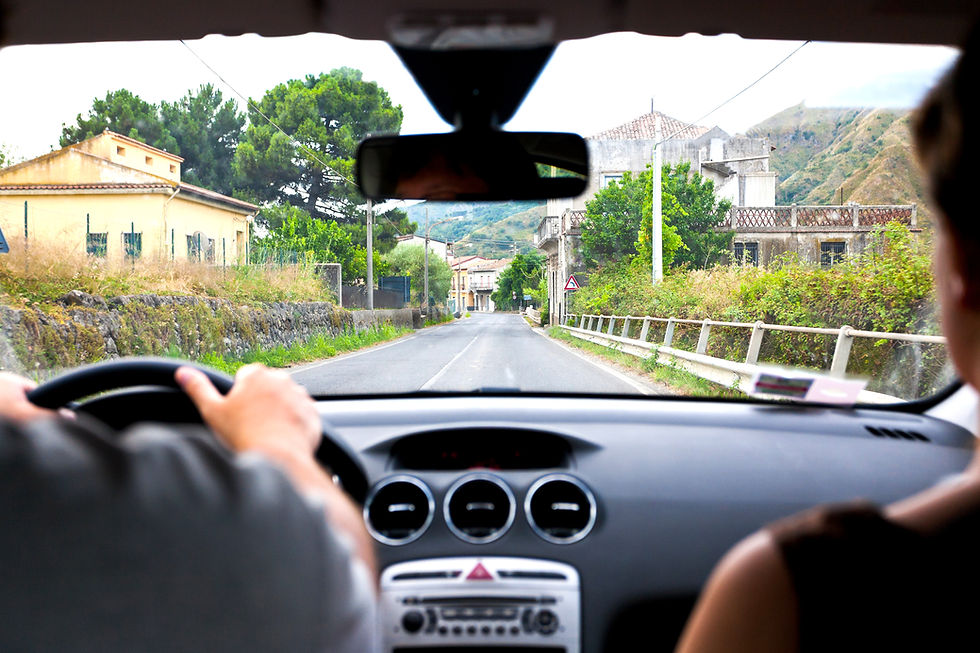Stroke Awareness and Lifestyle changes for Recovery and Prevention
- Breaking Barriers Fitness

- May 8, 2020
- 3 min read
Updated: May 9, 2020
by Tina Jones, ACE Certified Fitness Trainer
When I was 13, my mother had a debilitating hemorrhagic stroke caused by an aneurysm. She immediately told me she had a severe headache. As the symptoms progressed she told me her vision was blurry and she became dizzy. At this point I called 911. The final symptoms that occurred before the ambulance arrived were slurred speech, the inability to respond, and unconsciousness. I had no clue what a stroke was, but I thank God the ambulance responded quickly and stabilized my mother.
ABOUT STROKES
Strokes occur when a blood clot develops in an artery preventing the flow of blood and oxygen to the brain (Ischemic Stroke) or when blood has ruptured onto the brain damaging brain cells (Hemorrhagic Stroke). A mini stroke, Transit Ischemic Attack (TIA) occurs when insufficient oxygen cannot access the brain. A TIA is also viewed as a warning of a possible more severe stroke in the future. According to the Center for Disease Control, of over 795,000 that are stricken with strokes, approximately 140,000 are fatal or obtain prolonged physical challenges. Once a stroke victim has a stroke, the chances of another can increase or decrease depending on the lifestyle changes made to reduce the probability.
A few reasons strokes occur are prior health risks such as high blood pressure or atherosclerosis and/or lifestyle decisions such as poor nutrition habits, lack of physical activity, and stress. When a stroke occurs it is important to recognize the symptoms and BE FAST to call 911.
Below are the symptoms.
Balance may become unstable.
Eyes can become weak and impair vision in one or both eyes.
Face drooping on one side
Arm weakness on one side and/or numb
Speech slurred or difficulty executing thoughts to speech
Time to call 911. The time between detection and action will impact the severity of damage or could end in fatality.
Depending on which part of the brain is impacted by the stroke, will determine the symptom. Additional symptoms are sudden severe headache, dizziness, confusion, seizures, and loss of consciousness.
REHABILITATION:
After the stroke, my mothers' left side was severely weak and her face drooped on the left side. Upon the direction of her physician to begin rehabilitation, my mother took physical, occupational, and speech therapy to regain balance, cognition, and the ability to perform activities of daily living. Thereafter, she began a recovery fitness program.
The severity of the stroke will determine how an effective recovery fitness program can aide in rehabilitation. A few areas of concentration within the program will include strength, cardio, flexibility, and postural training. Strength training may focus on the improvement of muscle quality to strengthen grip and regain balance. Cardio training would aim to improve mobility and endurance. Flexibility would be incorporated to improve range of motion muscles or maintain joint movement. Postural training is important as it encompass strength, flexibility, and core straining to rectify.
PREVENTION:
Lifestyle changes that can be implemented to help reduce the chances of a stroke are to exercise more, monitor nutrition, and consult a physician.
Exercise activity can be increased by performing 30 minutes of moderate cardio activity and engaging in strength training to improve the muscular physiology. According to the National Institute of Health, exercise is an effective mechanism to reduce stress and enhance health. A certified personal trainer (www.breakingbarriersfit@gmail.com) can help develop and coach the execution of an effective exercise program. A physician should be consulted before engaging in physical activity.
Diseases such as high blood pressure and diabetes often come from poor nutrition and increase stroke risk. Review Macro nutrient and micro nutrient labels on food. Be cognizant of food and beverage choices and your body type as it is critical to the development of diseases that can cause a stroke. As exercise activity (cardio and strength training) is increased and nutrient intake monitored, together, these lifestyle changes can improve fat to muscle body composition ratio, reduce stress, and decrease the probability of stroke. If there is uncertainty regarding nutrition intake and meal preparation, a nutritionist or registered dietitian should be consulted.
Physicians are also available to aide with stroke prevention. A physician is authorized to identify the existence of diseases and diagnose internal risk factors that can cause stroke. As previously mentioned, high blood pressure, atherosclerosis, lack of exercise, poor nutrition habits, and stress are all factors that can increase the probability of a stroke. BE FAST to identify the symptoms and call 911. Stroke prevention is not guaranteed, but lifestyle changes to include regular cardio and strength training, improved nutrition habits, and physician counsel can help reduce the likelihood of a stroke and improve overall health.







Comments